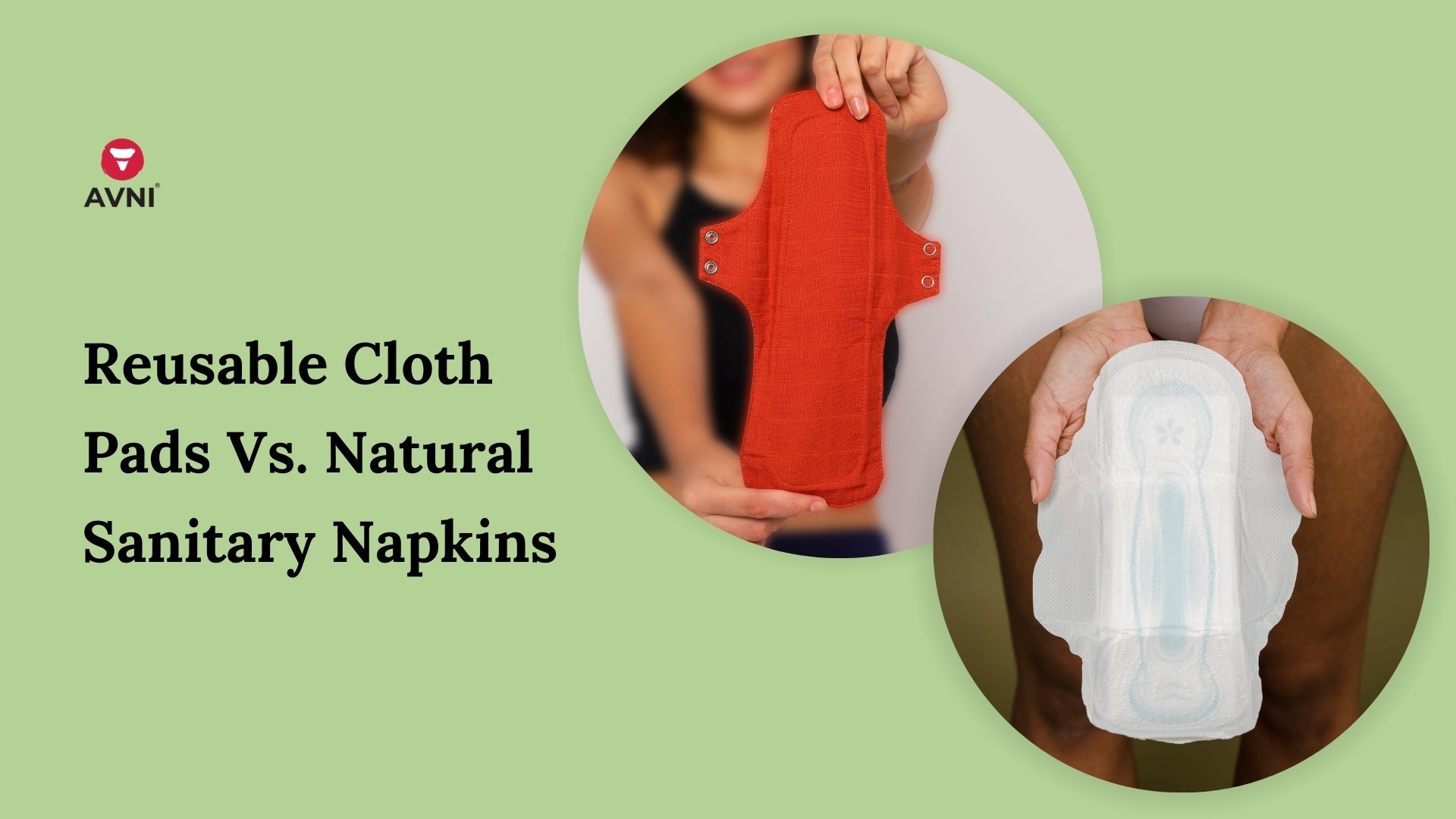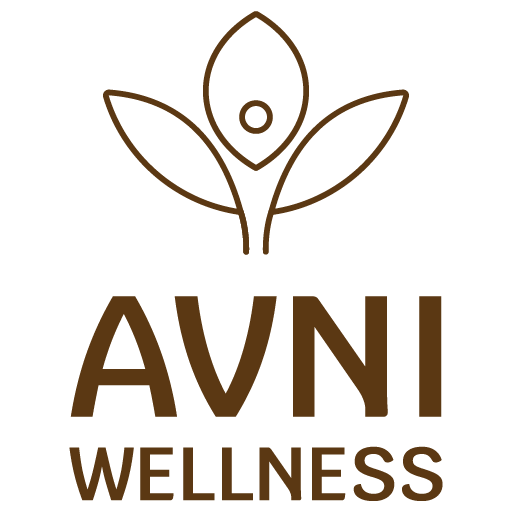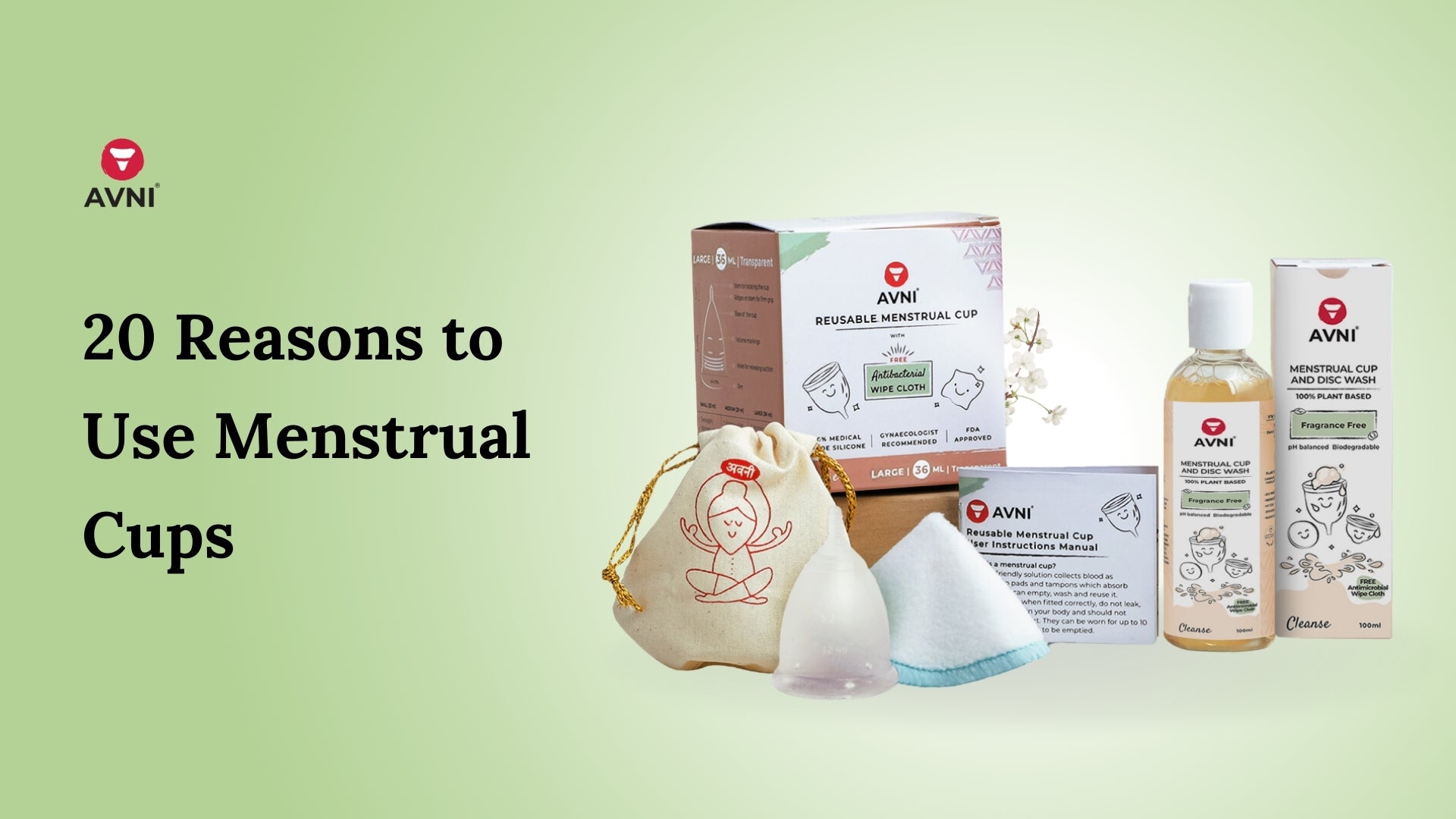
Reusable Cloth Pads Vs. Natural Sanitary Napkins
Plastic, bleached rayon, artificial fragrance, and antibacterial agents. These are some of the general contents used to make traditional sanitary napkins. On the surface, these ingredients may seem harmless but various studies have concluded that traditional sanitary napkins could cause ailments as mild as a period rash to diseases as deadly as cancer.
With that said, traditional sanitary napkins are in rampant use even in rapidly growing countries like India and Singapore. The lack of knowledge accompanied by the stigma of using reusable pads keeps the urban women from adopting them and this needs to change.
For a working-class woman with a busy lifestyle, reusable and Natural pads may be life-changing. It helps not only save time from frequenting the pharmacy but also contributes to a profound cause. Most traditional sanitary napkins used on a monthly basis end up in landfills, pollute the ocean and disrupt the ecosystem.
It is needless to say that you’re on the right track if you are considering switching to reusable cloth pads or Natural sanitary napkins as they are not only healthier alternatives but protect the environment as well.
While the benefits of embracing sustainable alternatives are aplenty in these countries, women and young girls in African nations are facing unfathomable plights even today.
A Nigerian Tale of Taboo
For a young girl in Nigeria, the beginning of her menstruating cycle is seen as a tragic change.
A change that is met with cheers and happiness in developed nations, this biological development carries a cultural stigma and social discrimination in Nigeria.
What could be a downhill domino effect that most certainly disrupts the innocence of a young girl, the taboo restricts her from going to school and participating in social activities entirely.
Reusable pads and Natural napkins that can be made with raw materials easily available could bring about a monumental change in the lives of these young girls.
Understanding Reusable Cloth Pads
Until the late 1990s, cloth pads were almost indigenous and used by women all across Asia.
While the evolution from generic/folded cloth pads to hand-made (stitched) reusable pads was the wiser route to take, conglomerates capitalized on the demand and unleashed factory-made, plastic sanitary napkins upon us.
Upon understanding the materials used, ease of making, using, reusing, washing, and many other benefits of reusable sanitary pads, it makes obvious sense to switch.
What materials are used to make reusable sanitary pads?
Reusable cloth pads can be made with any fabric that can be washed but they are generally made with the materials mentioned below for high efficacy.
- Lining Layer: is generally made with polyurethane laminate which is waterproof.
- Core Layer: is generally made with highly absorbent fabrics like cotton, and fleece.
- Skin Layer: is usually made with dark colour fabric made from natural and breathable cotton. The dark colour fabric helps hide the period discharge stains more effectively.
How to make reusable pads?
If you’re the crafty kind, you’d be proud to make your own reusable sanitary pad, save a ton of money, and reduce your plastic footprint dramatically.
Green Child Magazine’s study shows that an average menstruating woman uses between 12,000 and 16,000 traditional sanitary napkins in her lifetime. If that is an average of ₹250 per month, you can do the math and calculate the lifetime savings you can make.
Coming back to the question at hand, you may purchase the required materials in a shop close to you, or online to make your own reusable sanitary pad.
- Cut a piece of cardboard in the shape of the pad that suits you the best. You can use this as a stencil to cut the layers of the pad.
- Placing one layer at a time, cut all the materials in the shape of the cardboard stencil. Starting with the lining layer, then the core (absorbent) layer, and the skin layer.
- Make sure to line the layers in the right order and get ready to sew.
- Using a sewing machine or your hands, sew one stitch across the top of the pad.
- Sew the buttons that help attach the cloth pad to the panties.
You may find it useful that there are various websites that not only sell the right materials required to make your own reusable sanitary pads but also provide free tools to make them.
For more information, you may visit this Wikihow link for a detailed explanation.
If you are rather in the market to purchase your first reusable cloth pad, check out Avni’s collection of no leak, no stains, GOTS-certified, reusable cloth sanitary pads.
How does it work?
Simply put, reusable sanitary pads are available in all shapes, sizes, flows, and prices in the market, just like traditional pads. While traditional sanitary napkins almost never mention the material used in their absorbent layers, reusable pads often use cotton, hemp (for heavier flow), fleece, and other reusable materials that are easy to wash.
One of the first concerning things that come to mind with reusable pads is leakage and many of them work better than traditional pads. The waterproof materials like PUL used in reusable pads do a fantastic job containing the flow without leakages.
Check out the easy peasy guide to using reusable cloth pads
Doctors recommend traditional pads to be changed every 4 to 6 hours but reusable pads sometimes can be worn for nearly 12 hours.
Most traditional pads use adhesives that are notoriously known to give period rashes. To remedy this from the roots, reusable pads come with a button system that is more comfortable once you get used to it.
The benefits of using reusable pads far outway the cons and some of the amazing benefits are shared below, so continue reading.
How to Wash a Reusable Pad?
While the washing process of a reusable pad is what may make most users wary, there is nothing to worry about. Washing a reusable sanitary pad is as easy as it can get.
Most retailers mention the instructions to wash their pads on the packaging but here are some of the ideal methods to clean and maintain reusable cloth pads.
It is suggested that pre-soaking your pads in cold water is ideal to remove stains, to begin with (never soak or wash cloth pads in warm or hot water as stains may remain permanently).
You can use traditional ways of hand-washing your pad, that way you are thorough about it.
A frequently used method is washing it like regular laundry. Unless the reusable pad comes with a separable insert, you can toss it in with the rest of the laundry, and you are sorted. It is recommended that the insert is separated from the rest of the pad before doing so.
Avoid bleach, fragrances, fabric softeners, and also avoid leaving cloth pads in bathrooms or laundry rooms where the humidity is high.
Trial & error is the name of the game and creating a pad washing routine, and learning on the go is the best way to cultivate a new lifestyle of utilizing reusable cloth pads.
If you’re wondering about traveling with reusable pads, most wanderlusters who are often tree huggers follow one ingenious plan. Named “wet bags”, you may buy waterproof, zipper pouches that not only contain the reusable pad until you wash them but contain the odor as well. The said bags are easily available in the market for purchase.

What are the benefits of reusable cloth pads?
You may have already noticed some undeniable benefits of using reusable cloth pads but that is barely scratching the surface.
-
Cloth pads are budget-friendly
Although reusable sanitary pads are slightly expensive on the first purchase, there are women who claim to have used their assortment of pads for over 5 years. As mentioned earlier, at an average of ₹250 per month, it comes to a total savings of ₹15,000 for 5 years.
-
Cloth pads are comfortable
Just like the cotton clothes you wear, cloth pads are comfortable. The feeling of stiffness and itching of the plastic is never comfortable and cloth pads appease this immediately.
-
Reusable cloth pads do not make the quintessential plastic noise
Everyone’s been in uncomfortable situations when your traditional pads make plasticky noises when you move around. You can completely avoid this and also avoid noises in public bathrooms while changing the pads.
-
Cloth pads are good for the planet
As mentioned in the earlier part of the article, women can avoid anywhere between 12,000 to 16,000 sanitary pads that end up in landfills, disrupt oceanic biodiversity, and pollute the planet. This must be reason enough for everyone to resort to using cloth pads. In addition, you can also avoid the pollution caused by the packaging, shipping, and logistics when you order your traditional pads each month.
-
Cloth pads are healthy alternatives
Cloth pads replace plastics, adhesives, artificial fragrances, and other harsh chemicals with everything that is available naturally. Substances like bamboo, cotton, hemp, and others are not only eco-friendly but don’t react with your body and cause rashes or worse.
Understanding an Natural Sanitary Napkin
On the surface, it may seem like reusable pads and Natural sanitary napkins are the same but in actuality, they are drastically different.
1. Natural napkins are soft and avoid rashes
Conventional sanitary pads are notorious for being stiff, noisy, uncomfortable, and causing rashes whereas Natural sanitary napkins are soft, made of cotton, and keep them at bay. Natural pads are often made with biodegradable substances like corn fiber and bamboo fiber that allow your skin to breathe. The very reason that results in infections and rashes, it is imperative that your skin breathes and the napkin doesn’t trap the sweat & moisture within.
2. Natural napkins are sustainable
When you dispose of a traditional sanitary napkin, you never know where they end up once your trash lorry picks it up. By using Natural sanitary napkins, you can be rest assured that regardless of where the pad ends up, it will break apart and decompose into the earth naturally, leaving behind nothing that harms the ecosystem. According to studies, single-use plastic can take anywhere between 800 to 1000 years to decompose whereas Natural pads take less than 2 years.
3. Natural napkins help farmers and are chemical-free
While traditional pads are made from toxic synthetic materials like polyolefins, Natural sanitary pads are predominantly made of cotton and similar materials. Materials that come from crops, the money spent on Natural napkins help the farmers and discourage multi-million dollar factories from using harsh chemicals that inadvertently lead to allergic reactions.
4. Natural napkins are budget-friendly
There is a popular notion that Natural sanitary napkins are expensive. The notion may be partially & presently true just because the biodegradable raw material replacements in the Natural pads are slightly expensive to obtain. An expense that is drastically declining year on year, as Natural pads begin to sell in large quantities, the economy of costs kicks in, eventually making them cheaper than traditional napkins.
When you also consider the health benefits provided by Natural napkins, the slightly higher cost is more than justified.
5. Natural napkins are easy to use
If you know the ropes of using a traditional sanitary napkin, using a Natural napkin is no different. With that said, the benefits when compared to traditional pads are numerous. While traditional pads can absorb around 2 ml, Natural pads can absorb 5 ml of period discharge.
If you are a frequent traveler, using a Natural pad is stress-free as it absorbs more, and disposing of it is guilt-free as well.
Differences Between Reusable Pads and Natural Sanitary Napkins
Now that we understand that reusable cloth pads are made of various materials of cloths and Natural sanitary napkins are mostly made of cotton, let us take a look at all the differences.
|
Reusable Cloth Pads |
Natural sanitary Napkins |
|
Although reusable cloth pads are biodegradable when disposed of, the purpose of it is reusability. |
Disposable and easily biodegradable |
|
Made of cloth |
Made of cotton |
|
Moderate absorption |
High absorption |
|
Made with PUL, cotton, fleece, flannel, bamboo, and others |
Made with cotton fiber and bamboo fiber |
|
Travel-friendly with wet bags |
Travel-friendly and guilt-free disposal |
|
Value for money |
Slightly expensive |
|
Reusable for more than 3 years |
One-time use |
|
Extremely comfortable while worn |
Comfortable while worn |
|
Available for all types of flow (low to high) |
One-flow fit |
|
Ideal between 6 to 8 hours |
Ideal for longer hours |
|
Can make them yourself (DIY) |
Can’t make them yourself |
|
Washable |
Non-washable |
|
Uses button to attach to panties |
Uses biodegradable adhesive to attach to panties |
|
Breathable |
Extremely breathable |
Conclusion:
With all said and done, you may either choose to make your own reusable sanitary pads or opt to purchase them. I recommend doing the latter at first, and once you are well-acquainted with the idea of reusable pads, you may make them yourself.
On the other hand, natural sanitary napkins are the perfect alternatives to switch to from traditional napkins, and you may eventually choose to opt for reusable cloth pads.
The various awareness programs in recent years accompanied by word of mouth and Instagram ads have given flight to major brands & startups to manufacture & sell sustainable hygiene products.
Among the popular items such as reusable cloth pads, Natural napkins, and menstrual cups, millennial women are embracing & popularising products like menstrual discs as well.
Feel free to browse the shelves of myavni.com and reap the profound benefits of going green.
FAQs:
-
Which is better; sanitary pads or cloth pads?
Cloth pads are much better than sanitary pads as they are breathable, don’t cause rashes or infections, are made with biodegradable materials, and absorb twice the amount of discharge.
-
Which is better; reusable pads or cloth pads?
Reusable pads are better for the long term and cloth pads are better for heavier flow. Both variations have their own benefits based on the usage but reusable pads are slightly better if forced to compare.
-
Do reusable cloth pads really work?
Absolutely. Reusable pads that are made by GOTS-certified cotton really work. At myavni.com, you may find reusable cloth pads that are rated 4.6/5 stars by users, and these pads are made a promise to leave no stains, no leaks, absorbs up to 8 hours, and lasts more than 3 years.
-
How long do reusable cloth pads last?
Cloth pads that are made of top-quality cotton and other materials last between 3 to 5 years when taken good care of.
-
Do reusable cloth pads leak or smell?
No, even though no artificial fragrances are used in reusable cloth pads, they do not smell as they are highly absorbent and lock away the period discharge. They do not leak for the same reason.
-
Which one is better for travelling; reusable cloth pad or cotton pad?
The combination of both pads is ideal as you may use a cloth pad on days when you can’t change the pad for long hours, and cloth pads when you can change them after 8 hours for a wash.
-
How many reusable cloth pads will I have to require?
Based on the flow, you may purchase anywhere between 10 to 35 reusable cloth pads which are sure to last you more than 3 years when taken good care of.



Leave a comment
This site is protected by hCaptcha and the hCaptcha Privacy Policy and Terms of Service apply.